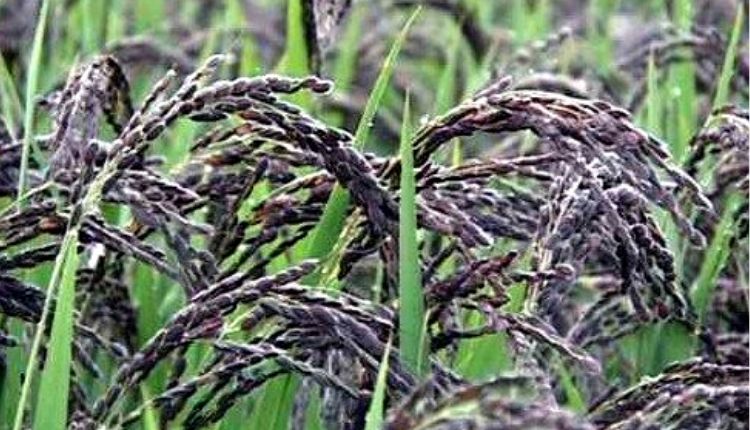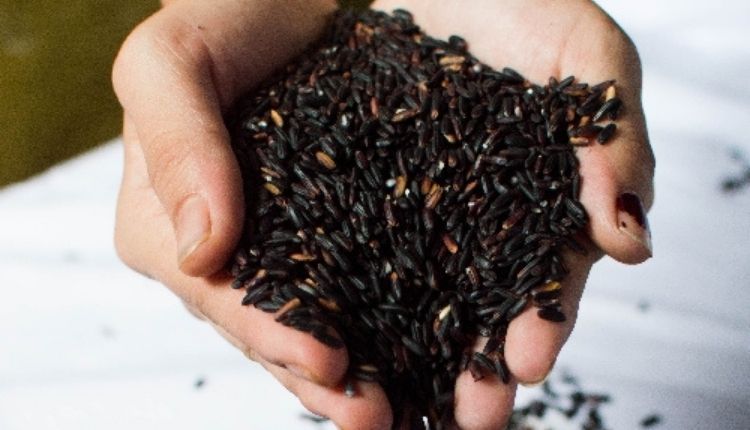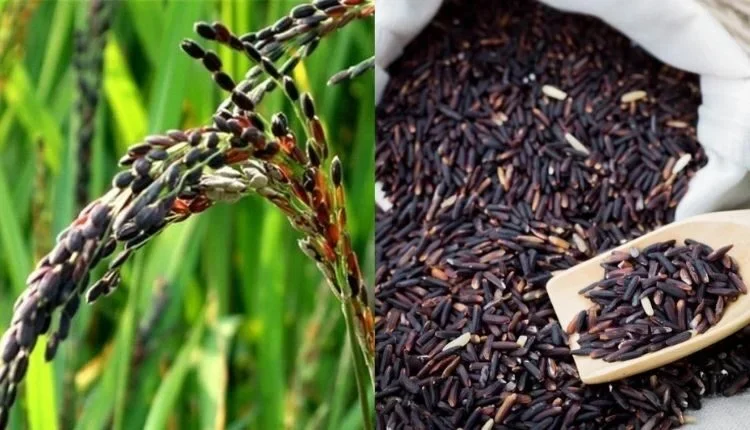Cultivate ‘super food’ black rice to earn more from paddy crop
India is the second largest producer and exporter of paddy in the world after China. About 900 lakh tonnes of paddy is produced here annually. In the current Kharif season (2021-22) itself, till January 9, about 533 lakh tonnes of paddy has been procured at the Minimum Support Price (MSP). But black rice is much less popular than white and brown rice in India. However, due to its amazing properties, diet experts have given it the title of ‘super food’. Perhaps, that is why the popularity of black rice is increasing rapidly in America and European countries.
There is a lot of white and brown rice in India, but black rice, which is considered better than traditional rice, is grown especially in the northeastern states like Manipur, Mizoram, Meghalaya and Assam, besides Odisha. The black rice of Manipur also has GI tag. Yet most people in India know little about it. Therefore, there is a need to increase awareness in the country about black rice rich in medicinal properties and nutrients, so that more and more people demand it and to compensate for this, the production can increase.
What is GI Tag?
Through GI Tag, the production area of a food item, natural and agricultural products and handicrafts is guaranteed. Under the Geographical Indications (Registration and Protection) Act, 1999, the introduction of a GI tag’s verifiable identification began in 2013. It also symbolizes the intellectual property of a particular area. The GI tag of one country cannot be claimed by another country. India today has the highest number of GI tags in the world. Because of this, about 365 Indian products have a special identity in the world.
Black rice gets ‘Super Food’ status
The name of the super nutritious species of black rice is ‘Oryza sativa’. It is also known in the country by names such as purple rice, forbidden rice, paradise rice, royal rice and king rice. It is also called ‘chak-ho ambi’ in Manipur. It means ‘delicious black rice’. It is smooth, tasty and full of high level of nutrients. It has got the status of a balanced ‘super food’. ‘Super foods’ are called such foods which have calories, nutritious and healthy properties.
Regular consumption of black rice can completely eliminate the possibility of long term diseases like carcinogenesis, diabetes, cardiovascular diseases. It is also a species of common rice. It has been developed from a gene called Black-4. It is mainly cultivated in countries like China, Thailand, India, Sri Lanka, Indonesia and Philippines. It originated in China. There it was considered lucky rice. China is the largest producer of black rice. There it produces about 62 percent of its total global production.
Also Read: Natural farming reduced the cost and increased profit for this farmer of Andhra Pradesh
White rice vs Black rice
Compared to white rice, black rice also contains higher levels of protein, fibre, vitamins, minerals such as iron, zinc, calcium, phosphorus, and selenium. They are rich in many health-promoting properties such as anti-diabetic, anti-oxidant, anti-cancer and anti-ageing etc. It is free from gluten and cholesterol. Sugar, salt and fat elements are also found less in it. It prolongs life. It is believed that people who consume black rice live longer due to the presence of essential phytonutrients.

Medicinal properties of Black rice
Due to the presence of 26% of the chemical ‘anthocyanin’ on the outer cover of the black rice grain, which gives it a purple colour, its colour becomes black. These chemicals are a major source of antioxidants. It is rich in vitamin ‘E’ and gives protection against cancer. Essential amino acids like ‘lysine’ and ‘tryptophan’ are found in it. They contain 6 times more antioxidants, which increase immunity. 100 grams of cooked black rice contains 160 calories, 1.5 grams of fat, 34 grams of carbohydrate, 2 grams of fibre and 7.5 grams of protein. It does not contain any saturated fat and cholesterol. Because of the above properties, awareness should be increased, so that more people know about its benefits and demand it.
The most important of the various elements is ‘Anthocyanin’ which is a great source of antioxidants and flavonoid pigments. It prevents DNA damage by eliminating harmful molecules from the body.
It helps in slowing down the ‘carcinogenesis’ process in cancer-inducing cells. Being gluten free, it is very easy to digest. Due to the high fibre content, it helps in reducing constipation. It is also helpful in reducing weight. It slows down the process of digesting glucose, so its regular consumption can also reduce the level of diabetes rapidly.

Black rice cultivation
Although it is cultivated on a very limited scale in India, there is no doubt that it is in great demand for export. For its cultivation, the soil and climate should be exactly the same as in the case of white or brown rice. But doing organic or natural cultivation is most beneficial, because only such produce can be easily exported and the price is good. Therefore, paddy farmers should contact their nearest Krishi Vigyan Kendra to find out those things about the cultivation of black rice which is suitable for the climate of their area. To begin with, every paddy farmer must produce 5 to 10 percent of his total cultivation of black rice and be a part of popularizing it by using it in his domestic consumption.
Contact us: If farmers want to share information or experiences related to farming with us, then they can do this by calling us on the phone number 9599273766 or by writing an email to [email protected] or by sending your recording. Through Kisan of India, we will convey your message to the people, because we believe that if the farmers are advanced then the country is happy.



